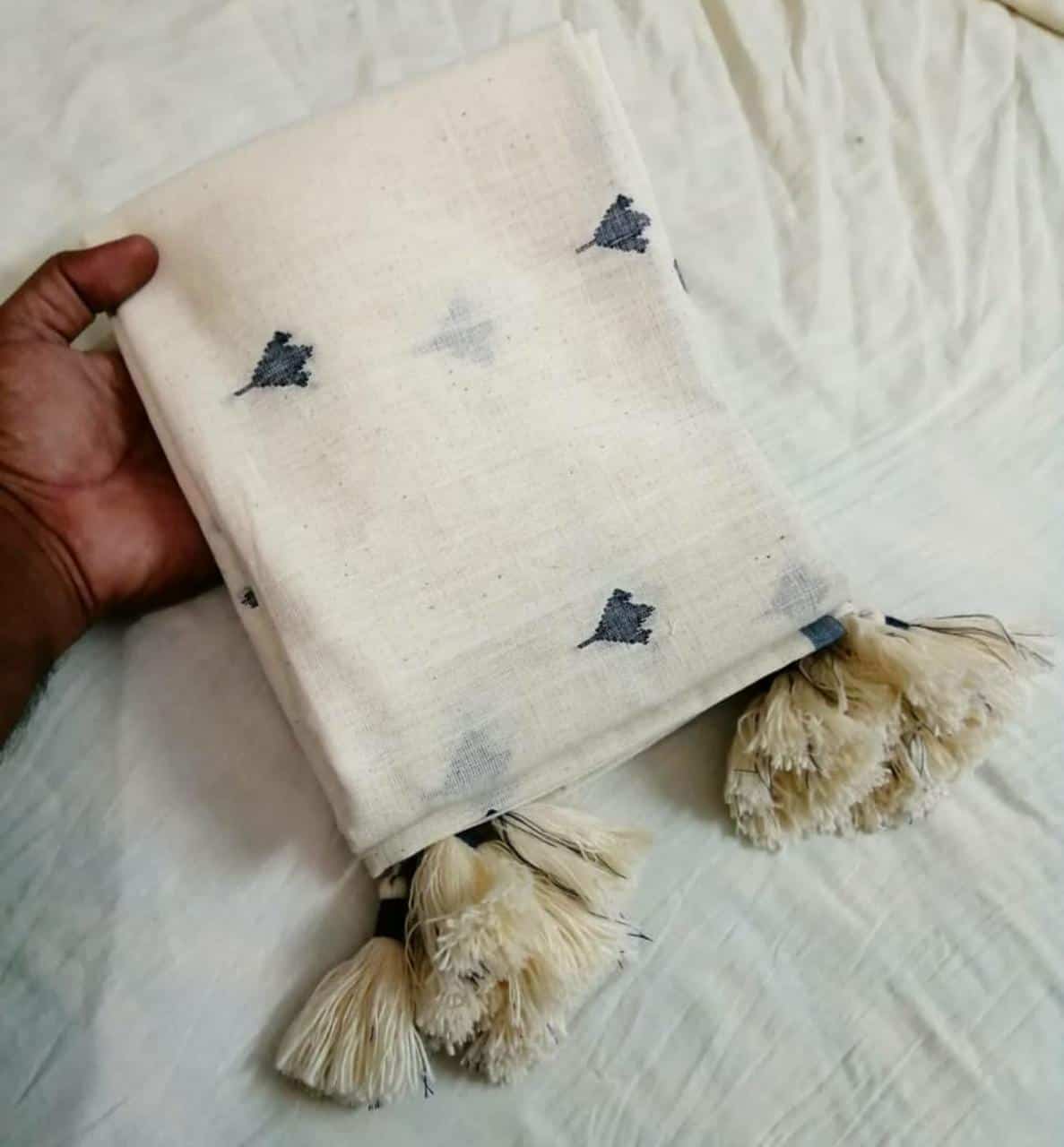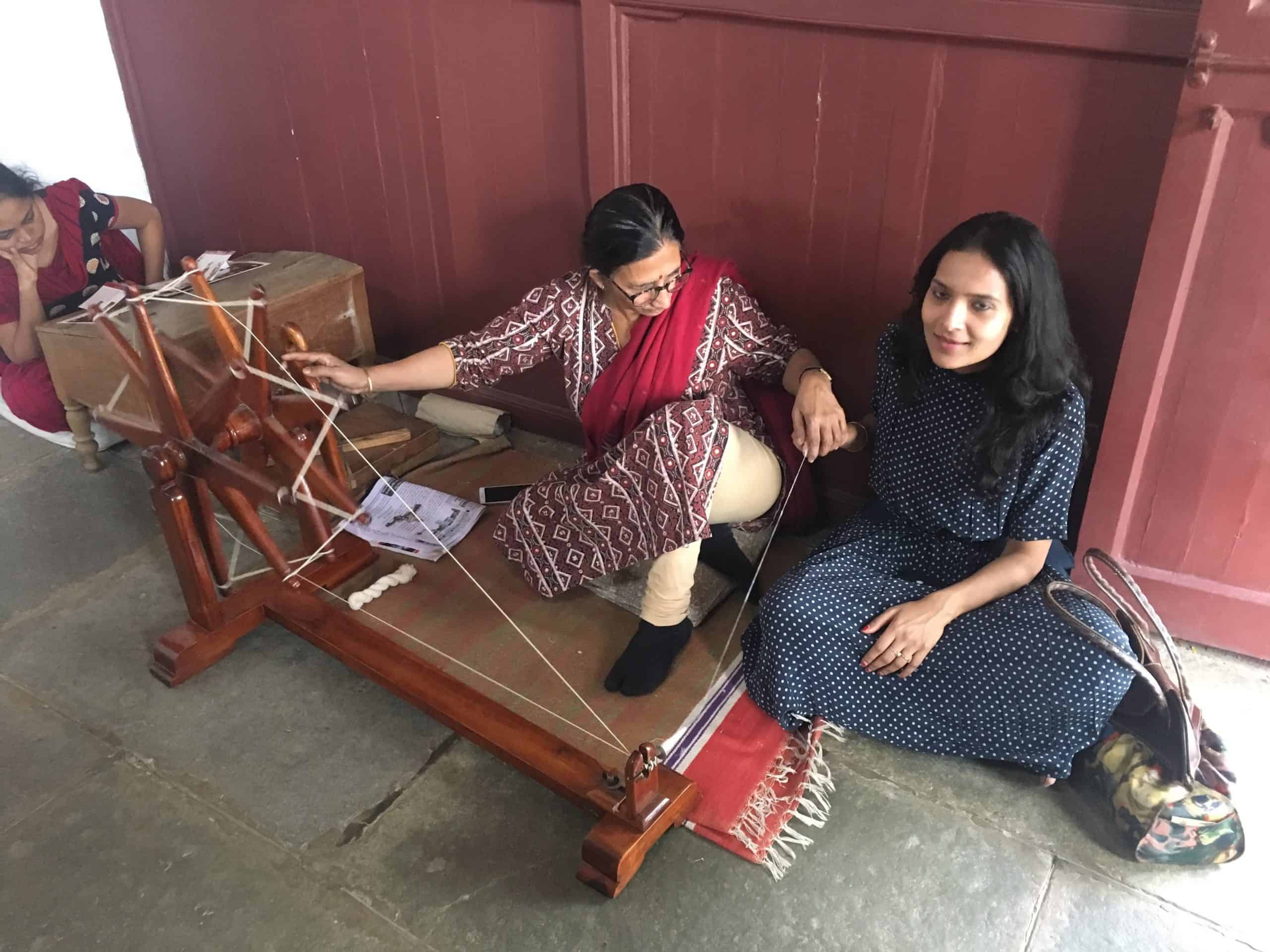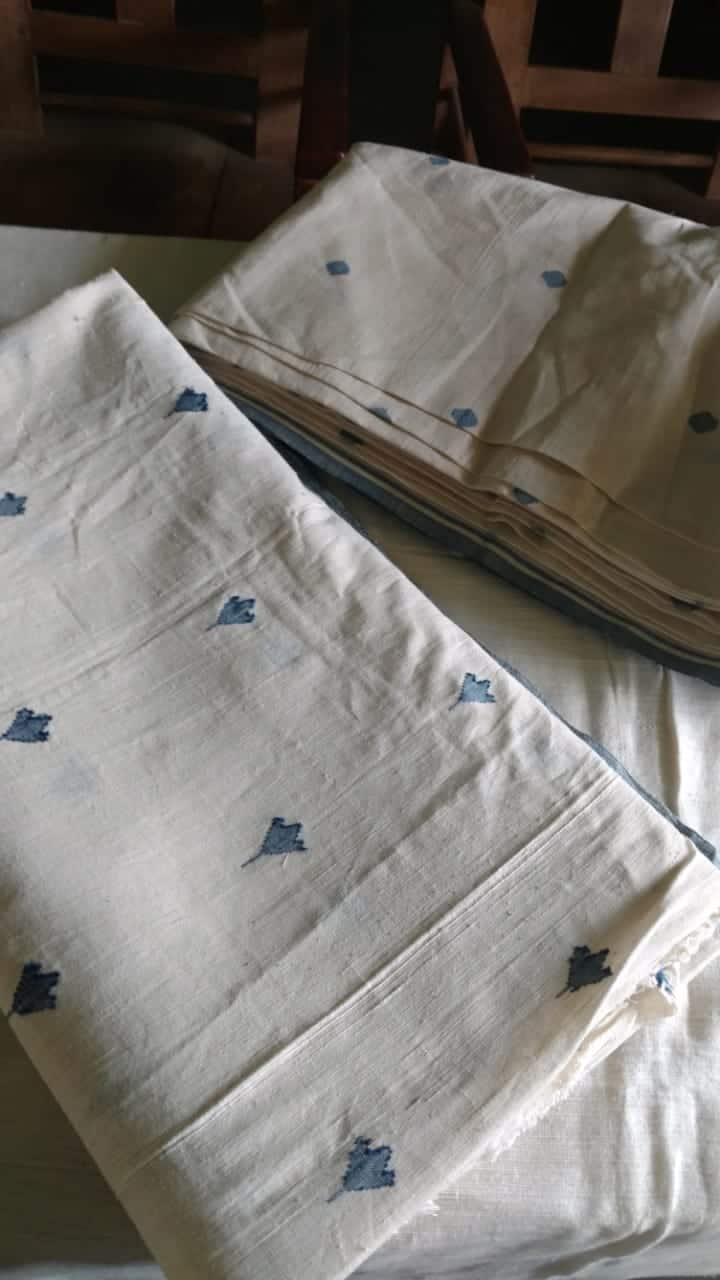22 May Khadi or Khaddar- How is khadi philosophy applicable today

Khadi or Khaddar- How is Khadi philosophy applicable today
My husband and I transition our day into relaxation and nostalgia by binge watching motion series adaptation of R. K. Narayan’s book ‘Malgudi days’ . Short stories from a small village exuding the zeitgeist of pre-independence India- reminiscent of my grandmother’s beautiful stories. In one particular episode of Malgudi days, the whole village organizes a bonfire to burn their ‘English’ clothes.. The story belongs to a time when Indian’s were encouraged to keep only ‘khadi’ or ‘khaddar’ clothes with them. It gives the audience a glimpse of the boycott movement that was adopted to fight against the imperial rule.
‘Khadi’ , a material embodiment of an ideal’
In the current situation, we are witnessing the collapse of long distant supply chains and brutal financial realities. It is time that countries adopted self reliance and economic self sufficiency that was advocated by M.K Gandhi for India. Gandhi used humble Khadi as his weapon for inspiring a revolution.

Actions speak louder than words
M.K Gandhi was a barrister in London. His sartorial transformation from a suited/booted English barrister to a representative of Indian independence displayed his ideals instantly. As a matter of fact, his choice to don a khadi loin cloth was indicative of his personal belief in the ‘khadi’ philosophy.
His clothing practices and decision to use spinning wheel at all times for instance, including at the public meetings, was his humble attempt to break class barriers. And to establish dignity in wearing handmade khadi. He used the power of clothing to unite the people into the struggle for Indian independence.
The Start of Khadi Movement
The state of West Bengal in India was becoming a mighty power of nationalist sentiments, a threat to imperial rule. To control these sentiments, the British decided to partition Bengal and create a separate country (now Bangladesh) out of Bengal. The Indians resented this decision. They demonstrated their resistance to this partition by boycotting British goods and buying exclusively local, Indian-made products. The people resorted to burn their British clothing, refused to buy imported sugar, and protested stores that sold foreign goods. This is ‘Swadeshi’, or the economic self sufficiency movement. The revival of indigenous industry, which at such an early stage, was born out of this movement.
Gandhi, with his humble spinning wheel and cotton loincloth drove a spirit of undaunted patriotism in Indians. He transformed the fabric into the symbol of a self sustaining India, By encouraging the masses to refuse British-made clothing and to spin their own yarn and wear khadi. Gandhi communicated to the population to be proud of their country and heritage.
This tactic opened up the movement beyond the upper rungs of the educated class. And offered the kind of revolution that the entire country could participate in.

How to Source Sustainable Cotton. Please read about it HERE
In Conclusion, I would like to share a quote from Gandhi. “If we have the ‘khadi spirit’ in us, we would surround ourselves with simplicity in every walk of life. The ‘khadi spirit’ means infinite patience. For those who know anything about the production of khadi know how patiently the spinners and the weavers have to toil at their trade similarly, we must we have patience while we are spinning the thread of Swaraj.”
Thank You
Nidhi Garg
ABOUT THE AUTHOR
 Nidhi Garg Allen is an alumnus of Parsons School of Design and Adjunct Professor at the Fashion Institute of Technology. She is a technologist turned artisan entrepreneur and the founder and CEO of Marasim. Marasim based in NYC is committed to preserving artisanal textiles that make use of regional techniques without uprooting craftspeople from their native communities
Nidhi Garg Allen is an alumnus of Parsons School of Design and Adjunct Professor at the Fashion Institute of Technology. She is a technologist turned artisan entrepreneur and the founder and CEO of Marasim. Marasim based in NYC is committed to preserving artisanal textiles that make use of regional techniques without uprooting craftspeople from their native communities


No Comments